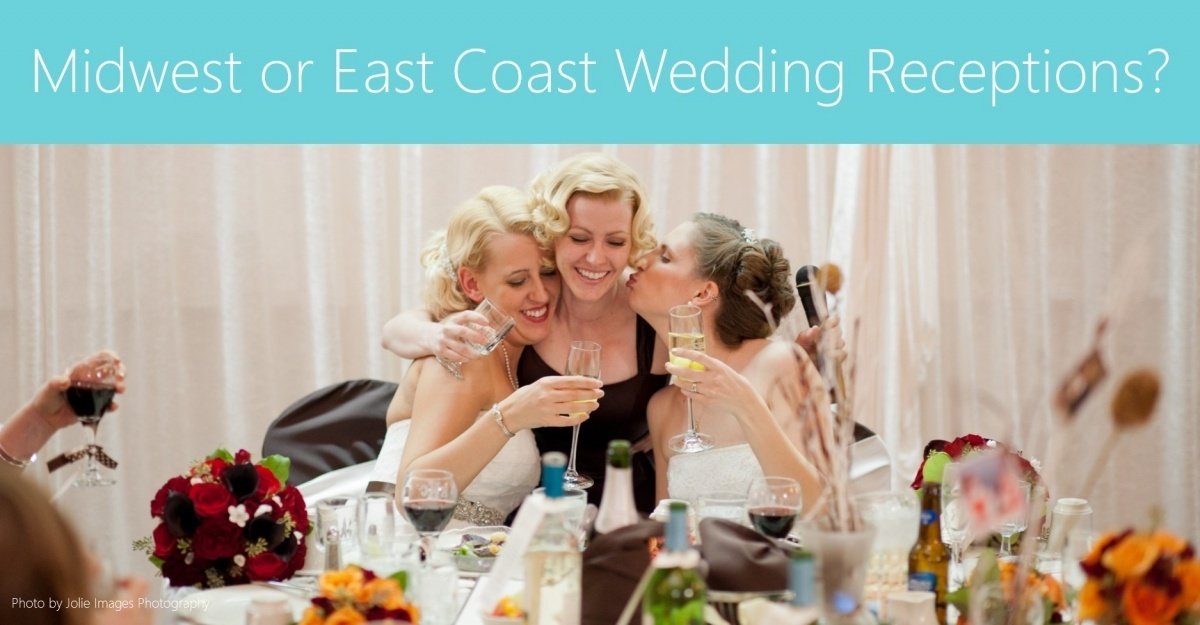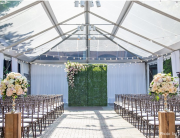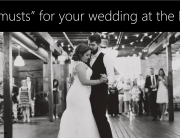It’s about flow. A well-planned wedding reception means more happy guests, more fun – and no worries. But there’s more than one way to skin a cat.
Your caterer, your wedding planner and your DJ will have the most say on how your reception flows – but in the end, it’s your wedding. Here are three common ways to structure a wedding reception.
1. The Midwest Reception
In Chicago, the most common receptions look like this:
- Cocktail Hour
- Introductions and Toasts
- Dinner
- Formal Dances (first dance and parent dances)
- Open Dancing
This approach saves all dancing until after dinner. The most high-energy music won’t start until after you eat – lighter recorded music (or live musicians, if you’re using them) can play during dinner.
 This makes Midwest receptions the most straightforward for most of your vendors. The downside is that there can be a “lull” after dinner – when some guests are finished eating, but others are just starting. The dance floor can’t open until your formal dances are completed, but you’ll probably want to visit tables before your first dance.
This makes Midwest receptions the most straightforward for most of your vendors. The downside is that there can be a “lull” after dinner – when some guests are finished eating, but others are just starting. The dance floor can’t open until your formal dances are completed, but you’ll probably want to visit tables before your first dance.
2. The East Coast Reception
Not just for New Yorkers any more. Here’s how it works:
- Cocktail Hour
- Introductions
- Formal Dances (first dance and parent dances)
- Open Dancing (1 or 2 songs)
- Toasts
- Dinner (1st course)
- Open Dancing (1 or 2 songs)
- Dinner (main course)
- Open Dancing
East Coast receptions put your formal dances before dinner. You’ll start dancing immediately after your grand entrance, when all eyes are already upon you. Your guests will also get to dance between courses, which is typically more fun than staring at a dirty plate. And other activities, like a photo booth, might stay available during dinner too.
Dancing between courses really brings a different energy to the party – and because your formal dances are done before dinner, your DJ (or bandleader, since a lot of East Coast receptions are “big band” style) can start after-dinner dancing as soon as guests are ready. The downside is a longer wait for dinner – if you’re planning a later reception, expect a few grumbling stomachs.
3. The Hybrid Reception
My personal favorite takes the best of both approaches:
- Cocktail Hour
- Introductions
- Formal Dances (first dance and parent dances)
- Dinner (1st course)
- Toasts
- Dinner (main course)
- Open Dancing
Keeping your formal dances before dinner makes for a nice flow – and avoids that after-dinner lull, since your DJ can open the floor as soon as guests are ready. But doing toasts between courses instead of before dinner means guests aren’t in danger of eating their napkins while your best man waxes poetic.
That’s a lot of choices.
Ultimately, the structure you use should depend on your venue, your guests and your personalities. But you shouldn’t have to become an expert at any of this to throw a great celebration – that’s what your DJ is for.
At Backthird, you’ll submit a basic timeline to your DJ – then you’ll meet to talk through every detail and decide what suits you best. Your DJ is trained and certified in details like this – don’t be afraid to use his or her expertise.
{{cta(‘b750795f-9bf8-40d4-9522-1bdb603670d0′,’justifycenter’)}}







Leave A Comment